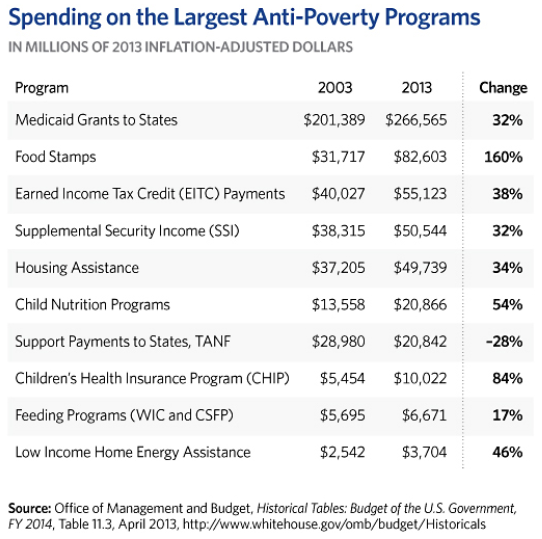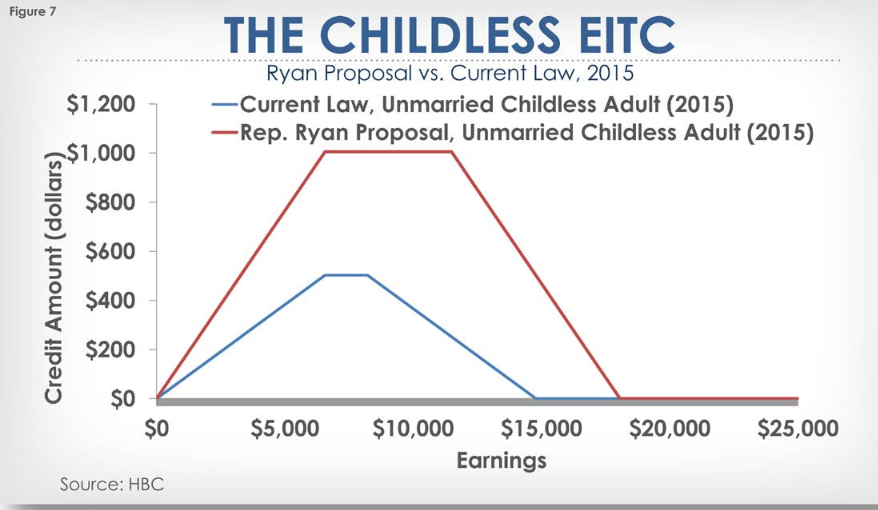Rep. Ryan Unveils Antipoverty Plan at AEI Event
The American Enterprise Institute held an event Thursdsay commemorating the 50th anniversary of the start of the War on Poverty. The event, “Expanding Opportunity in America,” featured House Budget Committee Chairman Paul Ryan (R-WI) as well as a panel of experts. At the event, Chairman Ryan unveiled his plan of policy reforms to “reduce poverty and increase upward mobility throughout America." Importantly, he estimates that the plan is budget-neutral and says that no federal funding to states will be reduced from current levels. The full video of the event can be viewed here. In addition to Ryan, the panel included:
- Stuart Butler, Heritage Foundation
- Ron Haskins, Brookings Institution
- Bob Woodson, Center for Neighborhood Enterprise
- Moderator: Robert Doar, AEI
Ryan said that his main goal in developing the plan was to “give hardworking taxpayers a break” by providing them with a strong and effective safety net to fall back on. A main facet of this safety net is the idea of “Opportunity Grants,” which would be block grants to states to replace 11 current anti-poverty programs including Temporary Assistance for Needy Families (TANF) and the Supplemental Nutrition Assistance Program (SNAP or food stamps). Unlike other block grant proposals, his plan offers the same amount of funding to states as they currently receive - making it deficit-neutral - but “gives them more flexibility in exchange for more accountability.” States would have the flexibility to use funds in different ways, but they would be required to submit a plan for their programs that demonstrated how they had moved people out of poverty, included work requirements for able-bodied adults, and utilized some non-governmental service providers. Ryan aims to increase the efficiency and effectiveness of antipoverty efforts by consolidating program offices and individualizing aid plans.
Aid recipients could work one-on-one with service providers to create a plan designed specifically for their needs, set benchmarks and work requirements, and implement rewards for meeting them. After testing their new plans, states would submit progress reports to the federal government that detail how effectively their programs are working to alleviate poverty and increase employment. Ryan claimed that allowing states more freedom in issuing aid would increase the effectiveness of the programs and eliminate unnecessary duplication and waste.
Though the official poverty rate has not changed significantly in the last decade, the chart below shows the increased spending over that time period, adjusted for inflation.
Haskins supported the Opportunity Grant initiative and commented that the grants should be experimental, and the results should be carefully documented so the most effective programs can be implemented. Woodson was also in agreement, saying the personalized component of the plan was a major strong point. He criticized Congress’ habit of generalizing impoverished populations and called for wise investment in targeted, individualized aid.
In addition to the OG initiative, the plan includes an increase the Earned Income Tax Credit (EITC) for childless workers, about doubling the maximum credit to $1,005 and lowering the eligibility age from 25 to 21 - policies very similar to the President's budget. Instead of paying for the increase with high-income tax increases as the President did, he proposed eliminating certain programs such as the Social Services Block Grant, the Farmers' Market Nutrition Program, and initiatives such as requiring a Social Security number to claim the refundable portion of the child tax credit. Butler agreed that the EITC should be raised and said this tactic is more effective than raising the minimum wage; however, he also noted the potential for fraud, given the current rate of improper payments that occur with the EITC.
Increasing the EITC has historically garnered support from both sides of the aisle, including from the President, Sen. Marco Rubio (R-FL), and Senate Budget Committee Chair Patty Murray (D-WA). The graph below shows the EITC under current law and under Ryan's proposal.
Ryan also emphasized the need to reform the criminal justice system by providing flexibility for judges to issue sentences less than mandatory minimums in some cases, assessing risks of recidivism to better tailor rehabilitation programs to individual prisoners, and broadly expanding participation in these programs. He said giving more second chances to non-dangerous criminals would save the cost of expensive incarcerations as well as add productive members to the workforce.
Ryan said the effort to increase opportunity must be a bipartisan one; he presented his reforms as “common sense,” saying he has had “enough with the politics - let’s talk solutions.” Haskins also noted that many of the aspects of Ryan’s plan could be supported on a bipartisan level.
As Ryan indicated in his speech, this plan is simply a "discussion draft." It is still in its beginning stages, and much cost analysis and alteration will likely take place before this plan is introduced as legislation. It will be interesting to see the final product.



